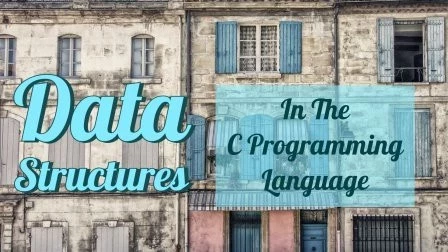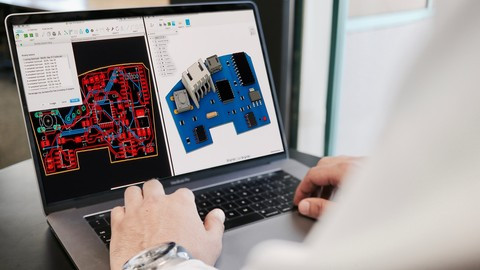Finding the remainder of division is an important concept in programming. It helps solve problems like checking if a number is even or odd, performing circular calculations, and implementing algorithms in games or mathematics. In C, the remainder is calculated using the modulus operator %. Learning how to find the remainder also reinforces your understanding of integer arithmetic, data types, and basic program structure. In this tutorial, you will learn to write a complete C program to find the remainder of two numbers, understand each line of the code, and avoid common beginner mistakes.

with hands-on learning.
get the skills and confidence to land your next move.
The remainder operation is different from regular division because it only gives the leftover part after dividing two integers. For example, dividing 7 by 3 gives a quotient of 2 and a remainder of 1. Using the modulus operator %, C makes it easy to get this remainder directly. Understanding how to calculate remainders is essential for many applications in programming, such as loops, condition checks, and number theory.
Using printf() and scanf() to Find the Remainder
The most common way to find the remainder in C is by using scanf() to get input and printf() to display output. Here is a complete example:
#include <stdio.h>
int main() {
int num1, num2, remainder;
printf("Enter the first number: ");
scanf("%d", &num1);
printf("Enter the second number: ");
scanf("%d", &num2);
if (num2 == 0) {
printf("Error: Division by zero is not allowed.\n");
} else {
remainder = num1 % num2;
printf("The remainder of dividing %d by %d is %d\n", num1, num2, remainder);
}
return 0;
}In this program, we declare three integer variables: num1, num2, and remainder. The scanf() function is used to read values from the user. We check if the second number num2 is zero, because finding a remainder when dividing by zero is undefined and will crash the program. The % operator calculates the remainder of the division num1 / num2 and stores it in the variable remainder. Finally, printf() displays the result to the user.
Examples with Fixed Numbers
Sometimes you may want to calculate the remainder of fixed numbers instead of asking for user input. This can be helpful for testing or simple calculations:
#include <stdio.h>
int main() {
int num1 = 17;
int num2 = 5;
int remainder;
remainder = num1 % num2;
printf("The remainder of dividing %d by %d is %d\n", num1, num2, remainder);
return 0;
}Here, we assign values directly to num1 and num2. The program calculates the remainder in the same way as with user input. In this example, 17 divided by 5 gives a quotient of 3 and a remainder of 2. Using fixed numbers is simpler but less interactive than using scanf().
Applications of the Remainder Operator
The remainder operator is useful in many programming scenarios. For example, you can use it to check whether a number is even or odd. A number is even if num % 2 equals 0, and odd if the remainder is 1. It is also used in circular calculations, like moving through array indexes in a loop, or in modular arithmetic algorithms used in encryption and games. Understanding the remainder is crucial for solving real-world problems efficiently.
Common Beginner Mistakes
When using the % (modulus) operator in C, beginners often make these mistakes:
- Forgetting to check for division by zero, which can crash the program.
- Using a floating-point number with
%, which only works with integers. - Using the wrong variable type, leading to incorrect results or compilation errors.
To avoid these errors, always use integers with the % operator and handle special cases like zero to keep your program safe and accurate.
FAQs
Q1: Can I use % with floating-point numbers?
No, the modulus operator % works only with integers. For floating-point numbers, you can use functions like fmod() from the math.h library.
Q2: What happens if I divide by zero?
Dividing by zero is undefined in C and will cause your program to crash. Always check if the divisor is zero before performing division or remainder operations.
Q3: How do I check if a number is even or odd using remainder?
You can use the expression num % 2. If it equals 0, the number is even; if it equals 1, the number is odd.
Q4: Can I use remainder in loops?
Yes, the remainder is often used to repeat patterns or cycle through indexes in loops. It is very useful for circular calculations or modular arithmetic.
Conclusion
Finding the remainder of two numbers in C is a basic but powerful concept. It teaches how integer arithmetic works, how to use the modulus operator, and how to avoid common errors like division by zero. This skill is foundational for many practical programming applications, from checking even and odd numbers to handling array indexes and creating modular algorithms. Practice writing remainder programs to strengthen your understanding of arithmetic operations in C.
References & Additional Resources
- Kernighan, Brian W., and Dennis M. Ritchie. The C Programming Language. 2nd Edition, Prentice Hall, 1988.
- TutorialsPoint: C Arithmetic Operators – Understanding all arithmetic operations.
- Programiz: C Modulus Operator – Examples and common use cases.
- OverIQ: C Arithmetic Programs – Step-by-step beginner tutorials.







